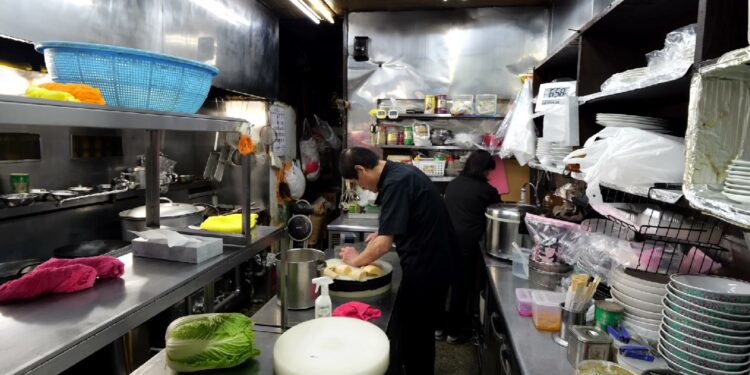┬й Japanese Noodles Udon Soba Osaka Nara / Youtube channel
And because тАЬthere are specific variations on how people do those rituals, how they eat, how theyтАЩve shaped their cuisines, how they eat their food,тАЭ she adds, тАЬit can be a topic of togetherness тАж or it can be a form of sharp divisionтАЭ.
The insults can also come from тАФ eating with hands or chopsticks instead of forks and knives, for example. This can be seen in class biases toward poorer people who didnтАЩt have the same access to elaborate table settings or couldnтАЩt afford to eat the way the wealthy did тАФ and used different, perhaps unfamiliar ingredients out of necessity.
Such belittlement can extend directly to current events. During the Second Gulf War, for example, Americans angry at FranceтАЩs opposition to the U.S. invasion of Iraq began calling French fries тАЬfreedom friesтАЭ.
And a common slur in the United States for Germans during the first two World Wars was тАЬkrautsтАЭтАФan attack on a culture in which sauerkraut was traditional food. тАЬWhat was wrong with the way urban immigrants ate?тАЭ Donna R.
Gabaccia wrote in her 1998 book *We Are What We Eat: Ethnic Food and the Making of Americans*. Reflecting on the views of the early 20th century and its demands for тАЬ100% Americanism,тАЭ she noted that тАЬsauerkraut became тАШvictory cabbage,тАЩтАЭ and one report lamented an Italian family that тАЬstill eats spaghetti, still hasnтАЩt assimilatedтАЭ.
These stereotypes have persisted despite the fact that the American palate has significantly broadened in recent decades, thanks in part to the influx of these immigrant communities, with grocery stores offering a wealth of ingredients that would have baffled previous generations.
The rise of restaurant culture has introduced many diners to authentic examples of cuisines that might have required a passport to access in other eras. Ultimately, Bentley says, тАЬwhen immigrants migrate to another country, they bring their food with them and maintain it as much as they can.
тАж ItтАЩs so reminiscent of family, community, home. TheyтАЩre just really material, multisensory manifestations of who we areтАЭ. Haitian food is just one example of that. Communities like those in New York and South Florida have added to the culinary landscape, using ingredients such as goat, plantains, and cassava.
So when Trump said that immigrants in SpringfieldтАФwhom he called тАЬpeople who cameтАЭтАФare eating dogs and cats and тАЬthe pets of the people who live there,тАЭ the echoes of his remarks played not just on food, but on culture itself.
Source link : http://www.bing.com/news/apiclick.aspx?ref=FexRss&aid=&tid=66e71fab2eeb4d24a0649e12785eff11&url=https%3A%2F%2Fwww.financial-world.org%2Fnews%2Fnews%2Fcrimes%2F27326%2Ffrom-chinese-to-italians-america-s-long-history-of-cultural-insults-through-food%2F&c=17958955352897125347&mkt=en-us
Author :
Publish date : 2024-09-13 01:00:00
Copyright for syndicated content belongs to the linked Source.












